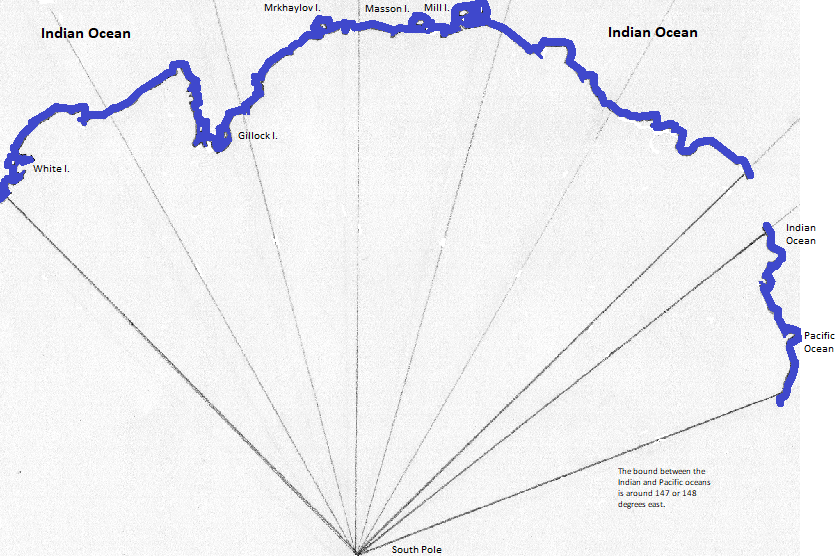
| To Duval Family Home Page | Antarctica |
| To Chris Home Page | Australia and its possessions |
| To Earth (Geography Home Page) |
This consists of two unequally-sized sectors of Antaractica, separated by the small French sector. Most of the area follows a pattern: a vast, high, ice-covered plateau; hills and mountains fringing the plateau near the coast, somtimes interrupted by sea-heading glacial flows; ice shelves along much of the coastline, some of them unattached to the shore; and sea ice, varying in extent and density with the seasons. Embedded in the sea ice are islands.
There are two exceptions to the pattern. Around 70 degrees east is a great indent at Mackenzie and Prydz Bays, with the Amery Ice Shelf as the interior of the former. Beyond the ice shelf is a vast glacial flow, Lambert, flanked by the Prince Charles Mountains and the Mawson Escarpment.
The other exception is the eastern end of Greater Antarctica. This edge is partly within the territory. Besides a bit of coast (Ross Ice Shelf), this edge includes part of the Transantarctic Mountains, including Mount Markham at 4,300 meters.
The South Magnetic Pole is within the territory.

Judging by the nationalities of the administrators of the permanent research stations, and sub-dividing the territory into arbitrary wedges, the languages and religions (or religious backgrounds) can be presumed. On both sides of the French sector, the territory is uninhabited. Protestant Christianity and English are exclusive between 60 and 75 degrees east. English is more common than Russian, and Protestant Christianity more than Russian Orthodox Christianity, between 105 degrees and 120 degrees east. English, Russian and Putonghua Chinese are about equal between 75 and 90 degrees. Thus, Indo-European languages and Christianity are the majorities there. Russian speakers and Russian Orthodox Christians are exclusive in two areas: 45 to 60 and 90 to 105 degrees east. No base is pre-eminent.
westernmost Australian Antarctic claim
second-most western Australian Antarctic claim
west central Australian Antarctic claim
central Australian Antarctic claim
center east Australian Antarctic claim
second-most eastern Australian Antarctic claim
Easternmost Australian Antarctic claim
1. Antarctic claims are still in abeyance as of 2014.